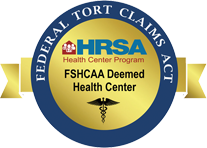Let’s talk about skin cancer from sun exposure. It happens to everyone. Five million cases are diagnosed yearly in the USA alone.
Most people think you only need to worry about prolonged sun exposure on bright, sunny, hot days. Not true.
It seems it is the cumulative dose over time of sun exposure to UV rays in sunlight that increases the risk for skin cancer. Sunburns multiply the risk. Dark skin and tans protect you from sunburn but not skin cancer. If you want to reduce your risk, you need to reduce exposure to the sun. Of course, you could just live in a cave and never leave, but that’s not practical for most of us.
For the rest of us, a few simple guidelines from the American Academy of Dermatology will reduce your risk:
• Wear sunscreen with at least SPF 30, water resistant, and broad-spectrum UV protection. Reapply at least every two hours while in the sun. If you sweat, swim, or towel off, reapply more often. Apply generously.
• Apply sunscreen whenever you are exposed to the sun, year-round. Even on cloudy days, 80 percent of the UV rays from the sun still get to you and your skin. UV exposure is increased in the snow, on the water, on sand, and concrete.
• Seek shade when you can, especially avoiding sun exposure from 10 a.m. to 4 p.m., when the sun’s rays are strongest. If your shadow is shorter than you, seek shade.
• Dress to protect yourself from the sun by wearing lightweight long-sleeved shirts, pants, a wide-brimmed hat, and sunglasses, when possible.
• Try to avoid sun exposure in infants under 6 months of age. The risk of sunburn is much higher. If sun exposure is unavoidable, follow the above guidelines, and try not to let your kids lick the sunscreen on their hands and feet.
Recently, news reports, politicians, and other influential people have raised concerns about using sunscreen due to possible toxicities.
The FDA regulates sunscreens just like over the counter drugs such as Tylenol. In May the FDA issued a call for more information about some of the commonly used chemical ingredients in sunscreen.
In November of this year they will issue the results of their information gathering to the public. Recent studies showed that more of the chemicals make it into the bloodstream than previously thought.
While these chemicals have been used for decades without any evidence that they cause disease, the FDA has wisely decided to look into this issue in more detail. This doesn’t mean that these chemicals cause disease, just that the FDA wishes to investigate them more thoroughly.
Studies in European countries and elsewhere have shown them to be safe, but the FDA wants to do our own studies. If evidence of harm is found, the offending chemicals will be banned from sunscreens.
For safety, I would suggest using sunscreens. The risk of skin cancer from even one sunburn is higher than the unproven risk of any chemical exposure that might be in the sunscreens. Again, if the FDA finds there is risk, they’ll let us know.
Have fun in the sun but please try to remember to take a sensible approach to reducing sun exposure.
For more complete and detailed information, try this website: www.aad.org/media/stats/prevention-and-care/sunscreen-faqs www.healthychildren.org (look up “safety” and “at play”)
Gregory Kostur, M.D. is Health West’s new pediatrician. After working in the US Air Force as a pediatrician until 2008, he worked in private practice near San Antonio, Texas until March of this year








